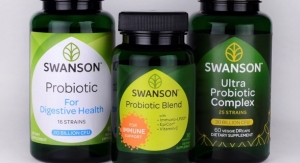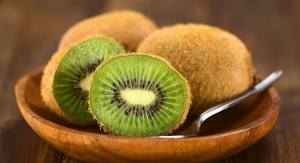07.01.13
A new report from MarketsandMarkets has valued the global probiotic market at $24.2 billion in 2011. The analysis predicted 6.8% growth from 2012 to 2017. In 2011, Asia-Pacific led the global market with 40% share, followed by Europe and North America in terms of revenue.
Probiotic dairy products commanded the highest market share among all the probiotic foodstuffs, accounting for almost 80% in 2011. This segment is expected to reach $23.9 billion by 2017.
The biggest markets for these products are currently in Europe and Asia-Pacific (APAC). APAC forms the largest market for probiotics with an estimated $14.6 billion by 2017. Its 6.9% CAGR from 2012 to 2017 is driven by consumer demand for health enhancing probiotic products such as probiotic yogurts, other probiotic dairy products and probiotic dietary supplements. Europe is the second largest segment and it is expected to reach about $11.9 billion by 2017, growing at a CAGR of 6.3% from 2012 to 2017. The North American market has gradually warmed to these products in recent years and is expected to grow at a CAGR of 7% from 2012 to 2017.
While use of probiotics in the U.S. is comparatively smaller than the rest of the world, the market is expected to grow at a promising rate of almost 6.8%. This growth is being driven by the large scale acceptance of probiotic yogurts in spoonable, single serve packs, probiotic cultured drinks in single shot packaging form and probiotic dietary supplements.
Probiotic dairy products commanded the highest market share among all the probiotic foodstuffs, accounting for almost 80% in 2011. This segment is expected to reach $23.9 billion by 2017.
The biggest markets for these products are currently in Europe and Asia-Pacific (APAC). APAC forms the largest market for probiotics with an estimated $14.6 billion by 2017. Its 6.9% CAGR from 2012 to 2017 is driven by consumer demand for health enhancing probiotic products such as probiotic yogurts, other probiotic dairy products and probiotic dietary supplements. Europe is the second largest segment and it is expected to reach about $11.9 billion by 2017, growing at a CAGR of 6.3% from 2012 to 2017. The North American market has gradually warmed to these products in recent years and is expected to grow at a CAGR of 7% from 2012 to 2017.
While use of probiotics in the U.S. is comparatively smaller than the rest of the world, the market is expected to grow at a promising rate of almost 6.8%. This growth is being driven by the large scale acceptance of probiotic yogurts in spoonable, single serve packs, probiotic cultured drinks in single shot packaging form and probiotic dietary supplements.















